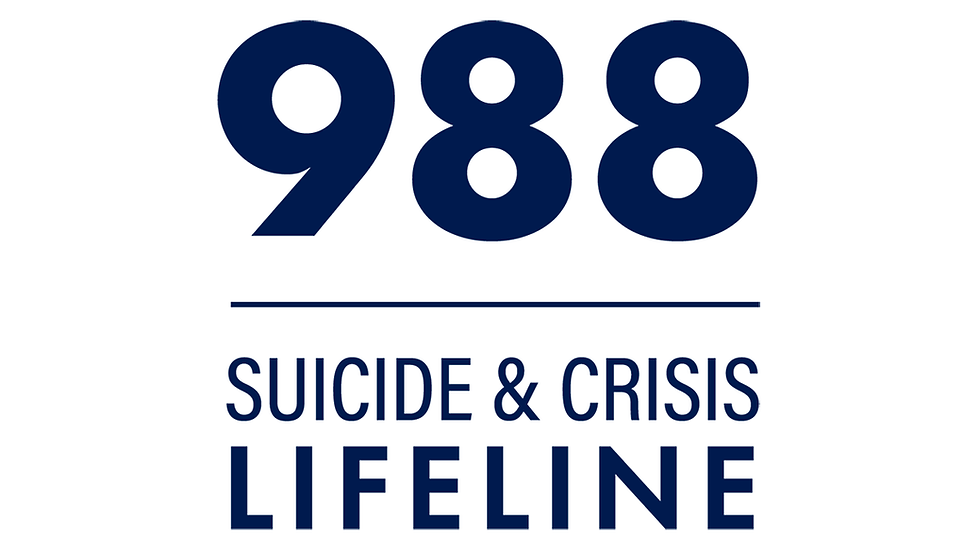September is Suicide Prevention Month
- IHCRC

- Sep 8
- 3 min read

September is Suicide Prevention Month, a time to reflect on one of the leading causes of death of people of all ages, and to know the ways to identity those most at-risk, and prevent it. According to the CDC:
Suicide rates increased approximately 36% between 2000–2022.
Suicide was responsible for 49,316 deaths in 2023 (about one death every 11 minutes).
The number of people who think about or attempt suicide is even higher.
However, there is hope and there is help. By identifying those at risk, people can protect, support, and provide care for those that need it.
AMERICAN INDIANS ARE MOST AT RISK

Suicide is the ninth-leading cause of death among American Indians or Alaska Natives (AI/AN). According to the CDC:
Non-Hispanic AI/AN people have an age-adjusted suicide rate of 28.1 per 100,000.
Non-Hispanic AI/AN people have a higher age-adjusted rate of suicide (28.1 per 100,000) compared with Hispanic AI/AN people (2.0 per 100,000).
The suicide rate among non-Hispanic AI/AN males ages 15–34 is 82.1 per 100,000.
In 2022, non-Hispanic AI/AN people had a suicide rate 91% greater than the general population.
Nearly half of all suicides in the United States are adults aged 35–64 years. Of note in this age group:
For men, non-Hispanic AI/AN had the highest suicide rate (41.3 suicides per 100,000).
For women, non-Hispanic AI/AN also had the highest suicide rate (12.8 per 100,000).
Sadly, our younger generation is also at risk. Youth and young adults aged 10-24 account for 15% of all suicides. Of note in this age group:
Non-Hispanic AI/AN have the highest suicide rate (36.3 per 100,000).
Non-Hispanic AI/AN had the highest rate of suicide attempts reported (20.1%).

The rates are also higher among those that are disabled, veterans or that identify as lesbian, gay, or bisexual. People can also be at higher risk based on where they live and work.
PERSONAL RISK FACTORS
The CDC identifies four types of risk factors that cause people to be at higher risk of suicide: Individual, Relationship, Community, and Societal.
Individual includes a previous suicide attempt, a history of depression and other mental illnesses, serious illness such as chronic pain, or a history of adverse childhood experiences.
Relationship includes a family history of suicide, bullying, high conflict/violent relationships, and social isolation.
Community includes lack of healthcare access, historical trauma, discrimination, or a suicide cluster in the community.
Societal includes the stigma associated with mental illness and seeking help, having easy access to lethal means of suicide, or unsafe media portrayals of suicide.
Without knowing a person's background, there are other warning signs to look for:
What they are saying in person or online: Talking about being a burden, feeling trapped or in unbearable pain, or wanting to die.
How they are feeling: Showing increased anxiety, extreme mood swings, hopelessness, or increased anger or rage.
How they are acting: Looking for a way to access lethal means, being isolated, increased substance use, or sleeping too little or too much.

HOPE AND HELP
Help is only a phone call away. When you've got a police, fire, or rescue emergency, you call 911. When you have a mental health emergency, you call/text 988. The 988 Suicide and Crisis Lifeline also has information available at its website, 988lifeline.org.
Just as there are individual, relationship, community, and societal risk factors for suicide, there are also individual, relationship, community, and societal protective factors:
Individual: A strong sense of cultural identity, having reasons for living such as family, friends and pets, having effective coping and problem-solving skills.
Relationship: Having support from family and friends, or feeling connected to others.
Community: Feeling connected to school, community, and other areas, and having consistent and high quality physical and behavioral healthcare available.
Societal: Having a reduced access to lethal means, or having cultural, religious, or moral objections to suicide.
Resilience Through Tradition Cultural Day on Saturday, October 11 at downtown Tulsa's Arvest Convention Center is one opportunity to foster cultural pride, and strengthen community connections. Celebrate this Indigenous Peoples Day holiday weekend with an event dedicated to American Indian identity.
Always remember: If you suspect someone is at-risk, it's important to approach the situation with sensitivity and support. Encourage them to talk about their feelings and concerns in a safe, non-judgmental environment. Offer assistance in finding local resources, including 988. Prioritizing an at-risk person's safety is crucial.
SOURCES
Tribal Suicide Prevention | Risk and Protective Factors for Suicide | About Suicide Prevention | Facts About Suicide | 988 Suicide and Crisis Lifeline




